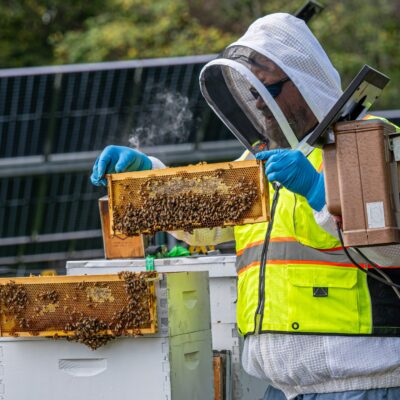
On Tuesday, October 3, police identified a body found over the weekend near an abandoned car on the Blue Ridge Parkway as that of UVA graduate student Elizabeth Michelle “Lizzy” Hafter. Her parents had last heard from her the previous Friday, when she told her mother that she was going to the mountains to study and enjoy the weather. William “Tom” Ashby had already shot a convenience store clerk on September 24 in Effingham County, Georgia, when, it’s alleged, he shot Hafter in the head, left her body, stole her car and took off.
Ashby drove Hafter’s car to Florida, where he fled from police, according to an FBI press release. A shoot-out in St. John’s County riddled the stolen car with bullets and hit Ashby in the chest. He died from a self-inflicted gunshot wound to the head.
Ashby is also suspected in other murders across the Southeast, including the slaying of a fruit vendor in Nassau County, Florida, on September 22, a produce stand operator in Beaufort, South Carolina, September 25 and two liquor store clerks in Cumberland Gap, Tennessee, on September 28.
Ashby’s MySpace page, which he last visited September 20, reveals a man haunted by a past relationship, struggling with insecurities and a personality he called “dark and jaded.” He named himself “toxic surfer,” tagged his profile with the phrase “Life without pain has no meaning…” and wrote blog posts about killing women. One read, “If I could move Id cut it and watch blood glide across your skin/If I could move Id cut it to kill you, like you killed me within/So now Id say youd look beautiful, dead upon the floor.”
Ashby was dishonorably discharged from the U.S. Air Force. He had no previous felony record.
Hafter, a native of Irmo, South Carolina, had graduated from UVA in May and was pursuing a master’s degree at the Curry School of Education.
She is not the first woman to be brutally killed in nearby national parks. In 1996, two women were murdered at their campsite at Shenandoah National Park near Skyline Drive. Police initially pegged the murder on Darrell Rice, who was caught assaulting a woman cycling on Skyline Drive in 1997, but Rice was eventually acquitted, and no convictions have been made in that case.
That same year, Alicia Showalter Reynolds disappeared from Route 29 while heading south toward Charlottesville. Her body was found several months later in a field near Lignum, Virginia. More than a dozen women reported that a man had tried to get them to stop their vehicles on that highway, telling them something was wrong with their cars. A suspect was never found in that case.
In Hafter’s case, FBI spokesman Larry Barry says there is no evidence that Ashby stalked her—the slaying was a crime of opportunity.—Meg McEvoy





